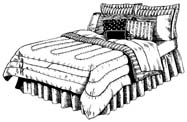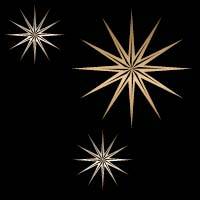 |
Miscellaneous |

|
 The title of this episode
comes from Thomas Hardy’s novel, Tess of the D’Urbervilles. It was the original
subtitle of the book. The title of this episode
comes from Thomas Hardy’s novel, Tess of the D’Urbervilles. It was the original
subtitle of the book.
 In Chinese, the family name
comes first and the personal name second. It is common, however, for immigrant Chinese to
anglicize the word order, even when they do not take alternative English personal names for
their daily interactions outside their own community. Nick, whom we know from “Cherry
Blossoms” to be fluent in Chinese, uses the proper order. Tracy and Captain Reese use
the anglicized order. In Chinese, the family name
comes first and the personal name second. It is common, however, for immigrant Chinese to
anglicize the word order, even when they do not take alternative English personal names for
their daily interactions outside their own community. Nick, whom we know from “Cherry
Blossoms” to be fluent in Chinese, uses the proper order. Tracy and Captain Reese use
the anglicized order.
 In the Prologue, Hong Wei
is described as “sitting up at the head of the bed by the bedtable (on l.s.)”. This is In the Prologue, Hong Wei
is described as “sitting up at the head of the bed by the bedtable (on l.s.)”. This is
 a clue that his initial story is a lie. The door to the room is on the right side.
For Hong to get into this position, if his story were true that he got back from dinner,
came in, and found the body, then he would have had to go round by the body in order to get to
the telephone in the room. Yet this is a guy who throws up at the sight of it. More
likely, he’d bolt back into the hall and down to the front desk. The position does
fit, though, with his coming from the bathroom, which is on the left.
a clue that his initial story is a lie. The door to the room is on the right side.
For Hong to get into this position, if his story were true that he got back from dinner,
came in, and found the body, then he would have had to go round by the body in order to get to
the telephone in the room. Yet this is a guy who throws up at the sight of it. More
likely, he’d bolt back into the hall and down to the front desk. The position does
fit, though, with his coming from the bathroom, which is on the left.
 Polymorphic light eruption
is a real medical condition, involving extreme sensitivity to ultraviolet radiation. I
know that, in “Black Buddha”, Tracy asks Nick about his “phototropic” condition; but this is a
mistake on her part: she got the word wrong. Very wrong, actually. Phototropism
involves turning towards the light. It is found in many plants—but
not in too many vampires! Polymorphic light eruption
is a real medical condition, involving extreme sensitivity to ultraviolet radiation. I
know that, in “Black Buddha”, Tracy asks Nick about his “phototropic” condition; but this is a
mistake on her part: she got the word wrong. Very wrong, actually. Phototropism
involves turning towards the light. It is found in many plants—but
not in too many vampires!
 The Portuguese has had to
be left untranslated, since I do not know the language. Rather than try to cobble
together out of a dictionary something that would undoubtedly be ungrammatical, I decided just
to go with the asterisks. Nick understands what is being said, of course: he is a
polyglot. But the “viewers” do not, unless they are Portuguese speakers.
I can, however, tell you what they are saying (though I wrote it, of course, in English).
If what I wrote is unidiomatic in Portuguese, then you may take it that they said
something of similar import. The Portuguese has had to
be left untranslated, since I do not know the language. Rather than try to cobble
together out of a dictionary something that would undoubtedly be ungrammatical, I decided just
to go with the asterisks. Nick understands what is being said, of course: he is a
polyglot. But the “viewers” do not, unless they are Portuguese speakers.
I can, however, tell you what they are saying (though I wrote it, of course, in English).
If what I wrote is unidiomatic in Portuguese, then you may take it that they said
something of similar import.
The first, longer, speech by the old lady is:
MRS. CARVALHO SR. |
Christina’s death is terrible; but it is a judgment on her.
I am her grandmother, and I love her, but I have to say it. |
And the second, shorter, exchange is:
MRS. CARVALHO SR. |
God’s judgment on her for her sins. |
MR. CARVALHO |
Mama. You are embarrassing us. |
 When we are told that,
because of her grandmother’s opinion on the subject of her working, Tina did not dare talk
about her new job when she visited her parents, this is not merely a touch of characterization.
It is also a plug in a plot-hole. It can only be because Tina could not talk
about her job that her sister doesn’t know the name of the hotel where her sister is working.
Otherwise, she'd be a fool to go there. When we are told that,
because of her grandmother’s opinion on the subject of her working, Tina did not dare talk
about her new job when she visited her parents, this is not merely a touch of characterization.
It is also a plug in a plot-hole. It can only be because Tina could not talk
about her job that her sister doesn’t know the name of the hotel where her sister is working.
Otherwise, she'd be a fool to go there.
 When Josefina says that
all that’s important to her fiancé is her wearing a long white wedding gown, she is
giving away her motive. Whether or not we can believe that it’s only her parents who When Josefina says that
all that’s important to her fiancé is her wearing a long white wedding gown, she is
giving away her motive. Whether or not we can believe that it’s only her parents who
 consider the big wedding important (and in my opinion—and I wrote it, after all—it’s
really Josefina who wants to impress Bob’s family), it’s clear that he doesn’t give a damn
about the reception and the flowers. So he isn’t the kind of man to care about a fancy
dress, either. Not in itself.
consider the big wedding important (and in my opinion—and I wrote it, after all—it’s
really Josefina who wants to impress Bob’s family), it’s clear that he doesn’t give a damn
about the reception and the flowers. So he isn’t the kind of man to care about a fancy
dress, either. Not in itself.
But symbolically, of course, the white dress means virginity.
And, whether or not, in this day and age, Bob cares if his bride lost hers to a previous
boyfriend, she presumably knows him well enough to realize that he’d call off the wedding if he
learned that she has a taste for sex with total strangers she picks up in
nightclubs. “Amber” is not the girl he thought he was asking to marry him.
Would her sister have told? I doubt if Josefina even thought
about it. She just panicked.
 Why was Josefina carrying a gun?
Presumably she had it with her—and kept it to hand even in bed—in case the stranger she picked
up turned nasty on her. Guns are far less common in Canada than they are in the United States.
I doubt if she had a permit. I suspect the gun with which she killed her sister was
purchased illegally. Why was Josefina carrying a gun?
Presumably she had it with her—and kept it to hand even in bed—in case the stranger she picked
up turned nasty on her. Guns are far less common in Canada than they are in the United States.
I doubt if she had a permit. I suspect the gun with which she killed her sister was
purchased illegally.
 Once again, I mention
Hardy, the composite artist who appeared briefly in “Crimson Joy”. My intention, of
course, is to give the impression of a consistent roster of police officers. There
aren’t all that many people employed by the Toronto Police to make these pictures. Once again, I mention
Hardy, the composite artist who appeared briefly in “Crimson Joy”. My intention, of
course, is to give the impression of a consistent roster of police officers. There
aren’t all that many people employed by the Toronto Police to make these pictures.
By the way: notice that for once it’s Reese who makes a
sensible suggestion that Nick hasn’t thought of. The man must, after all, have been a
pretty good cop to have got to the rank he has.

Return to Top
Return to Episode Listings
Episode Fifteen Homepage |
Episode Guide |
Home
| 



